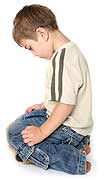
THURSDAY, March 29 (HealthDay News) — The rate of autism spectrum disorders continues to rise among American children, with one in 88 now receiving such a diagnosis, the U.S. Centers for Disease Control and Prevention reported Thursday.
That’s an increase from the one in 110 estimate released by the CDC just two years ago. The newer data, from 2008, also shows that autism is almost five times more common in boys than girls, with one in 54 boys diagnosed with the condition.
Why the steady uptick in cases? That’s not entirely clear, experts said.
“We know that people want answers to what’s causing this increase, and so do we,” Coleen Boyle, director of CDC’s National Center on Birth Defects and Developmental Disabilities, said during a noon press briefing on Thursday.
“Some of the increase is due to the way children are identified, diagnosed and served,” she said. “Although exactly how much is attributable to these factors is not known.”
Mark Roithmayr, president of the national advocacy group Autism Speaks, theorized that about half of the increase is accounted for by better diagnosis. But he agreed that the reasons for the rest of the increase remain unknown.
According to CDC Director Dr. Thomas Frieden, “Autism is a complex condition, and there remain many unanswered questions.” Speaking at the press conference, he said that “we are learning more every day, but still have a great deal to learn.”
What is known, according to Roithmayr, is that, “very clearly now, there is an autism epidemic in the United States.” And the increase in incidence — about a 23 percent jump every two years — has been ongoing, he said.
The report was published Thursday in the CDC’s Morbidity and Mortality Weekly Report.
According to the new CDC numbers, the rate of children being diagnosed with autism varies widely by state: From one in 210 in Alabama to one in 47 in Utah. The biggest increase in diagnoses was seen among Hispanics and blacks, according to the report.
The data show that about 11 in every 1,000 8-year-old children have now been diagnosed with autism, a 23 percent increase since the last report in 2009.
One hopeful sign: there are more early diagnoses, which can aid in treatment, experts noted. The CDC said that more children are now being diagnosed by the age of 3. Among children born in 1994, just 12 percent of cases were being diagnosed by that age, but for children born in 2000 that number increased to 18 percent.
Of course, the severity of an autism spectrum disorder can vary depending on the child. About 9 percent of those with autism are what is called “high-functioning,” about
44 percent have the most serious form of the condition and 47 percent have various milder forms of autism, Roithmayr noted.
He added that there is a panel, set up by the American Psychiatric Association, that is currently looking at changing the definition of autism. Such a change could affect these numbers and will be included in the next edition of the Diagnostic and Statistical Manual of Mental Disorders, the “bible” of psychological disorders used by psychiatrists worldwide.
Shrinking the definition of autism is bound to meet with controversy, however. “It is imperative that DSM5 not exclude anyone on the spectrum,” Roithmayr said. “If it does, we are going on a big offensive.”
Autism has other costs, too. According to Autism Speaks, the financial burden related to autism has tripled over the past six years. Based on these new numbers, the group estimated that the annual price tag for autism in the United States will reach $137 billion, he said. “This is a national emergency,” Roithmayr said, and he believes insurance companies must do more to help parents shoulder the cost of caring for a child affected by autism.
All of this points to the need for more funding for research on the genetic and environmental causes of autism, he added.
“It’s concerning that there continues to be a steady increase in autism spectrum disorders,” said Dr. Andrew Adesman, chief of developmental & behavioral pediatrics at the Steven & Alexandra Children’s Medical Center of New York, in New Hyde Park.
Although there are some children with autism who can show significant gains there are many who don’t, which highlights the long-term impact of the problem on both individuals and society, Adesman added.
“This is a significant problem from a public health standpoint,” he said. “There is a need for parents and clinicians to identify children with autism spectrum disorder as early as possible in the hopes that it would maximize children’s developmental outcome.”
|
Looking for the Warning Signs of Autism According to Dr. Rebecca Landa, director of the Center for Autism and Related Disorders at the Kennedy Krieger Institute in Baltimore, signs of concern include:
|
More information
For more information on autism, visit the U.S. Centers for Disease Control and Prevention.

